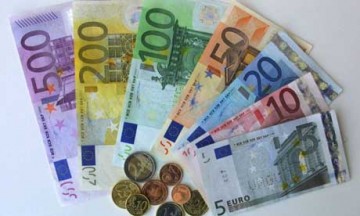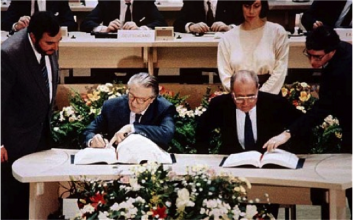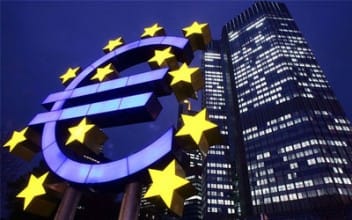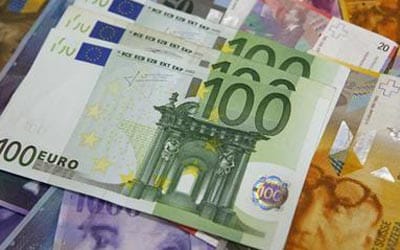The euro, which is denominated either by the € sign or the EUR code, is the official currency of the eurozone, a grouping of 17 of the 28 member states of the European Union. Currently, the countries that use the Euro are as follows: Austria, Belgium, Cyprus, Estonia, Finland, France, Germany, Greece, Ireland, Italy, Luxembourg, Malta, the Netherlands, Portugal, Slovakia, Slovenia, and Spain. It is also used in five other European countries and several countries (mostly in Africa) use currencies that are pegged to the euro.
 From a forex trading perspective, the euro is considered the second most important currency after the US dollar, being the second largest reserve currency and the the second most traded currency. It has the highest combined value of banknotes and coins in the world, with almost €920 billion in circulation as of March 2013, and the eurozone is considered the second biggest economy in the world. It is also the default base currency for all currency pairings, and is always to the left of any currency that it is paired with (eg EUR/USD).
From a forex trading perspective, the euro is considered the second most important currency after the US dollar, being the second largest reserve currency and the the second most traded currency. It has the highest combined value of banknotes and coins in the world, with almost €920 billion in circulation as of March 2013, and the eurozone is considered the second biggest economy in the world. It is also the default base currency for all currency pairings, and is always to the left of any currency that it is paired with (eg EUR/USD).
A Brief History
The establishment of a single European currency had been a long-held goal among many European politicians since the 1920s. The movement towards this aim gained momentum in 1969 with an initiative by the European Commission to co-ordinate economic policies and foster economic cooperation between members of what was then called the European Economic Community. However, the Nixon administration’s abandonment of the Bretton Woods system, which had kept exchange rates stable since the end of the Second World War, brought about huge fluctuations in currency prices that scuppered plans to co-ordinate European currency values.

Nonetheless, EEC members pressed ahead with plans to move towards a single currency, establishing the European Monetary System (EMS) in 1979, which fixed exchange rates to a new virtual currency, the ECU (European Currency Unit). Further progress was made towards full monetary cooperation with a central bank throughout the 1980s, despite opposition from the UK. A formal agreement to create a single currency (without UK participation) was reached at the Maastricht Treaty of 1992.
The name ‘euro’ was officially adopted in 1995, and the European Central Bank (ECB) was established in 1998, replacing the European Monetary Institute, but it would not assume its full powers until the launch of the euro in non-physical form (travellers cheques, banking, electronic transfers etc) on 1st January 1999. Notes and coins were first issued in December 2001, and became widespread throughout 2002.
Exchange rates
In general, the ECB does not intervene in the foreign exchange markets, targeting interest rates rather than exchange rates. In this respect, the ECB follows the Mundell-Fleming economic model rather than the IS-LM model employed by the US. This implies that a central bank without capital controls cannot maintain interest rate and exchange rate targets at the same time because increasing the money supply would result in a depreciation of the currency,

The euro launched in January 1999 at a value of USD 1.1743, climbing to USD 1.19 in its first day of trading, but by October 2000 it had fallen to USD 0.8252, which led to emergency action by the G7 to support the euro in 2001. This helped the currency to recover, and it has been above parity with the USD since November 2002. The overall trend throughout the 2000s was one of growth, and the euro peaked at USD 1.5916 on 14 July 2008, in the aftermath of the global financial crisis. While the euro initially fell after the crisis broke, it recovered fairly swiftly, despite the problems afflicting the eurozone, and by 2011 had recovered to pre-crisis levels.
The Eurozone Crisis

Source: libcom.org
The effects of the financial crisis did, however, hit the euro soon after this, with sovereign debt problems across many of the major participants in the eurozone dragging the whole project into jeopardy. Greece was the first to buckle under the strain of mounting government debts, and has been the subject of several bailouts from the EU in an attempt to keep the euro together. These bailouts came with tough austerity conditions, which created political unrest and threatened to destabilise the whole eurozone project.
Other countries to encounter similar problems included Spain, Italy, Ireland, and Portugal, and at the time of writing these issues have yet to be fully resolved. In an effort to address the crisis, the ECB has taken several measures, and it is yet to be seen whether these will prove to be effective despite the multi-billion euro cost of implementing them. In an effort to fix the current problems and prevent them from surfacing in future, there has been movement toward closer integration of the fiscal policies of the member states, an initiative known as the European Fiscal Union, but this treaty has yet to be drafted and the participation of all members (barring the UK and Czech Republic, who have opted out) is far from guaranteed at this stage.
Other Articles in this Series:
Major Currencies: The US Dollar (USD)
Major Currencies: The British Pound (GBP)
Major Currencies: The Swiss Franc (CHF)
Major Currencies: The Japanese Yen (JPY)
Major Currencies: The Australian Dollar (AUD)
Major Currencies: The Canadian Dollar (CAD)
Major Currencies: The New Zealand Dollar (NZD)
Tradersdna is a leading digital and social media platform for traders and investors. Tradersdna offers premiere resources for trading and investing education, digital resources for personal finance, market analysis and free trading guides. More about TradersDNA Features: What Does It Take to Become an Aggressive Trader? | Everything You Need to Know About White Label Trading Software | Advantages of Automated Forex Trading









